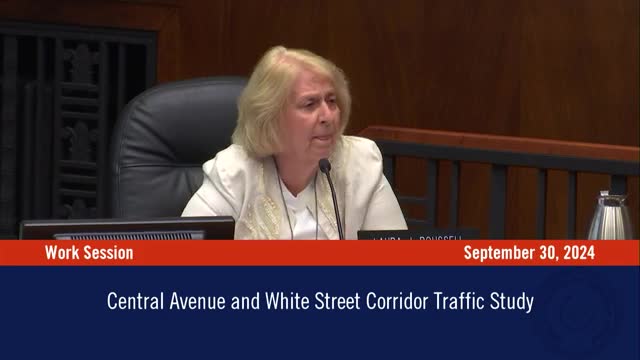City plans major traffic overhaul to enhance safety and flow
September 30, 2024 | Dubuque City, Dubuque County, Iowa
This article was created by AI summarizing key points discussed. AI makes mistakes, so for full details and context, please refer to the video of the full meeting. Please report any errors so we can fix them. Report an error »

During a recent government meeting, officials discussed the potential transition from one-way to two-way traffic on Central and White streets, highlighting both safety benefits and challenges. The proposed change is expected to increase the number of turns, which could lead to a higher risk of traffic conflicts. However, the model presented indicated that safety could improve in the two-way section, particularly for drivers already on Central.
The discussion revealed that many drivers prefer Central for northbound travel due to its proximity to key destinations, suggesting that a two-way configuration would likely result in increased usage of Central over White. This preference is attributed to the current necessity for drivers to use White as the only northbound route.
Additionally, the meeting addressed the integration of smart parking and traffic management technologies, which aim to optimize traffic flow and reduce travel times. Officials noted that while these technologies are not yet fully implemented, they could play a crucial role in managing traffic patterns and providing real-time routing information to drivers. This could help alleviate congestion by encouraging drivers to choose less busy routes.
The conversation underscored the importance of leveraging technology to enhance traffic management, particularly for commercial vehicles, ensuring they receive timely information for efficient navigation. Overall, the meeting emphasized a forward-thinking approach to urban traffic management, balancing safety, efficiency, and user preferences.
The discussion revealed that many drivers prefer Central for northbound travel due to its proximity to key destinations, suggesting that a two-way configuration would likely result in increased usage of Central over White. This preference is attributed to the current necessity for drivers to use White as the only northbound route.
Additionally, the meeting addressed the integration of smart parking and traffic management technologies, which aim to optimize traffic flow and reduce travel times. Officials noted that while these technologies are not yet fully implemented, they could play a crucial role in managing traffic patterns and providing real-time routing information to drivers. This could help alleviate congestion by encouraging drivers to choose less busy routes.
The conversation underscored the importance of leveraging technology to enhance traffic management, particularly for commercial vehicles, ensuring they receive timely information for efficient navigation. Overall, the meeting emphasized a forward-thinking approach to urban traffic management, balancing safety, efficiency, and user preferences.
View full meeting
This article is based on a recent meeting—watch the full video and explore the complete transcript for deeper insights into the discussion.
View full meeting
